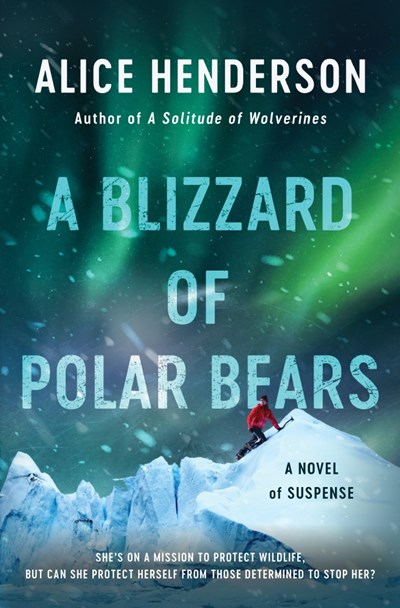Suspense fiction for those who enjoy character-driven stories, plenty of dialogue, and simple, straightforward prose. Single parent Kate is awoken by noise in her backyard, but it’s just deer. Then she sees some teens running from the cottage at the end of her property. Days later she starts getting anonymous texts—which are vaguely threatening—then a window is smashed and a knife is found embedded in the cottage’s wall. This would be enough to set anyone on edge, but Kate is especially vulnerable; she survived a home invasion two years ago in which her husband, a cop, was murdered. Fortunately, the former police chief is her father-in-law, and her sister —they’ve been estranged for 20-plus years—agrees to move in and help raise Kate’s two kids. As the terror slowly escalates, and the list of potential suspects grows, Kate has to go deeper into her past to understand who wants to kill her today.
Brian Kenney
It’s 1981 and Inspector Joaquín Alzada has one goal: to keep his head down and avoid trouble. Not so easy when you are a cop in Buenos Aires during a period of extreme political turmoil, with Las Madres de la Plaza de Mayo bearing daily witness to the thousands of citizens who have been made disappeared. But when his activist brother Jorge is among the missing, Joaquín has no choice but to use his political chips and try to save his brother. Flip to twenty years later, when Argentina is facing a serious economic crisis, with middle-class citizens going hungry and taking to the streets. Again, Joaquín’s reaction is to lie low—he’s close to retirement, after all—but circumstances won’t allow it. For one thing, the body of a woman is found, dumped near the morgue, while at the same time one of Buenos Aires’s wealthiest women has gone missing. Are they a match? Then, the twenty-something son of Jorge—raised by Joaquín and his wife—joins the protestors. Repentance isn’t so much crime fiction as it is fiction embedded in crime, and Díaz skillfully uses Joaquín’s inner voice—poignant, dryly witty, anxious—to move the narrative along. A powerful first novel that brilliantly illuminates a country, a historical period, and an individual.
Life could be better for Hayden McCall, a diminutive, red-headed (don’t call him cute!) eighth-grade teacher in Seattle. The bad news: While hanging out at a gay bar, he manages to get kicked in the eye by Camilo, a beautiful go-go boy. The good news: Camilo invites him home for the evening and turns out to be quite a gentleman. The worse news: Hayden wakes up the next morning to find Camilo gone, his bull terrier needing to be fed, and the police knocking at the door. With that, we are off and running as Hayden searches for Camilo, accompanied by two of Camilo’s best friends, both lesbians: Hollister, who’s African American, a risk taker, and in possession of an impressive mohawk; and Burley, who’s a giant, a baker, and a total stoner. Both women are keenly aware that the cops are not going to take the disappearance of a young Latino man seriously, a go-go boy at that, and it is up to them to save their friend. This novel is a wonderful mix of lightheartedness—no surprise, sidekicks Hollister and Burley provide plenty of laughs—and seriousness, as we learn that Venezuelan-born Camilo is a “Dreamer” whose stay in the U.S. is precarious. Congratulations to Osler for creating a mystery set in the LGBTQ community that is both compelling and heartfelt. Bring on the next installment!
Poor Jan. In her late twenties, she’s lost both her job and her boyfriend at the same time. Pretty much directionless, she rents a remote cottage on the edge of a forest and settles down to start that novel she’s always wanted to write, and to try to sort out her future. All would be wonderful were it not for the tapping on the windows every night, the dog barking at something—or someone?—in the garden, and the continual feeling that she is being observed. Cut away to Ian and Emma, a young couple in the area, who have lost a second child to stillbirth, with both babies born deformed. Although they decide to no longer seek having children biologically, Ian becomes obsessed with trying to understand the cause of their misfortunes. These two narratives really crank up the suspense as Jan seeks to discover the nature of her nocturnal visitors while Ian slowly uncovers disturbing facts about his and Emma’s parentages. Eventually the two story lines converge, making for a super creepy, but satisfying, ending. Kudos to Stone for a thriller that relies on neither violence nor murder and manages to treat a medical condition with compassion, not exploitation. Reading groups will enjoy discussing the many moral dilemmas the novel presents.
Everyone has secrets. But in The Accomplice, even the secrets have secrets. Luna and Owen, who meet in college, aren’t lovers. They’re BFFs, despite their many differences. Owen is handsome, preppy, and privileged. Luna is overly honest and direct, but when it comes to her life, quite mysterious. Owen in a way adopts Luna, who ends up spending her holidays with Owen’s mad, drunken family—and eventually seduces Owen’s older brother. When Owen’s ex-girlfriend dies—suicide, murder, or accident?—the campus turns on him. All except for Luna. And when, fifteen years later, Owen’s wife is violently murdered—yes, he and Luna live in the same town—again Luna takes Owen’s side. Or does she? Because Luna has her own secrets she needs to protect. This is crime fiction in which conversation far outweighs the action, but that’s O.K. You’ll never regret the time you spend with this dysfunctional group of frenemies.
A beautiful, powerful novel that is as simple in its telling as it is deep in its emotions. Eli Stone is a shell of a man, undone by the death of his beloved wife and desperate to find an excuse to keep on living. Renovating The Roz, a landmark jazz club in the center of Denver’s African American community, is his latest effort to give his life meaning. The club is about to open when in walks Liza, a law student who has dedicated her life to saving her Dad, Langston, who sits on death row, falsely accused of robbery and murder. Eli and Liza recognize the need in each other, but put aside their feelings to focus on clearing her father. When Langston is sentenced to be executed in 30 days, the tension ramps up and the suspense becomes unbearable. Throughout, Eli turns to memories from his past, especially that of a priest who helped raise him and gave him the skills to survive as a Black man in a racist world. Wrongful conviction is one of the greatest injustices in our legal system, and crime fiction provides a perfect tool for exploring it. I can’t wait to read more about Eli and Liza. In the meantime, this book would make a great choice for book groups that want to use fiction as a springboard to discuss racism, anti-racism, and incarceration.
Alex Carter is just winding down a research project in Montana—she’s a wildlife biologist—when a fellow scientist calls to see if she would like to lead a study of polar bears. Within weeks she’s at a scientific research center in Churchill, Manitoba, polar bear capital of the world. Accompanied by a research assistant and a pilot, Carter flies over the frozen terrain of Hudson Bay in a helicopter, seeking bears. When she locates one, she shoots it with a tranquilizer from the helicopter then descends to quickly tag it and take samples. Henderson does a terrific job in describing life in Churchill, especially the effort to survive in such a hostile environment, but even more compelling is the information about the polar bears, struggling to live despite climate change, loss of prey, and increased exposure to toxins. Slowly Alex’s study is undermined—someone breaks into the lab and steals her samples, her supplies are tampered with, her pilot disappears—until on one mission the plane itself sets on fire, leaving Alex and her team stranded on the ice, miles from anywhere. Henderson manages to marry both suspense and mystery in this book, featuring a classic, suspense-driven fight-and-flight with several overarching mysteries. It’s even better than the excellent first book in the series, A Solitude of Wolverines. Fans of Nevada Barr’s Anna Pigeon novels may well enjoy this.
Val Chesterfield, a scholar of ancient Nordic languages, lives a sheltered life. Suffering from depression and anxiety, she relies on medicine, and the occasional drink, to get through the day. The apparent suicide of her twin brother, Andy, a climate scientist conducting research on an island off the coast of Greenland, leaves her bereft and suspicious. But then Wyatt, one of her brother’s research colleagues, calls with the unbelievable news that they have discovered a girl frozen in ice, likely for hundreds of years, who has thawed out and is now alive. Would Val come to Greenland and try to communicate with her? Despite her phobias, Val agrees, as much to learn about Andy’s death as to meet the girl. Sigrid, as the girl comes to be called, is a medical anomaly; humans can’t survive being frozen. Typically, this is the point when I would put the book down and walk away. But Ferencik does such a stellar job of selling us on Sigrid, creating a relationship between the girl and Val, and depicting the growth of language between the two that I read on, riveted. All is not well on their little island, it turns out. Wyatt acts more like a cult leader than a scientist, two other researchers meet unanticipated challenges, and Val realizes that Sigrid is sick, possibly dying—and it’s up to Val to figure out how to save her. Ruth Ware fans will appreciate both the tension and the claustrophobia.—Brian Kenney
Lux McAllister is eager to get out there and explore the world. She’s lost her lousy job cleaning hotel rooms in Hawaii, is still mourning her mother’s death, and fears that her boyfriend, Nico, is getting too comfortable to leave. So when Brittany and Amy, best friends from college, hire Nico to sail them to an incredibly remote island in the South Pacific, she’s game. After all, what could go wrong? Pretty much everything, it turns out. After surviving a horrific storm, they finally get to Meroe Island, and are indeed dazzled by its beauty. But they’re also surprised to discover another ship anchored off the beach, with two occupants, Jake and Eliza, who are rich, friendly, and more than willing to share their wine cellar. The six of them live out their Robinson Crusoe fantasies until things begin to fray. And Meroe Island, famous for its history of shipwrecks and murder, begins to live up to its reputation. Reckless Girls builds slowly while we are treated to lots of backstory, but that’s OK. The characters are compelling, the set up is worth it, and once the suspense starts we are 100 percent in. For fans of Ruth Ware and Lisa Jewell.










